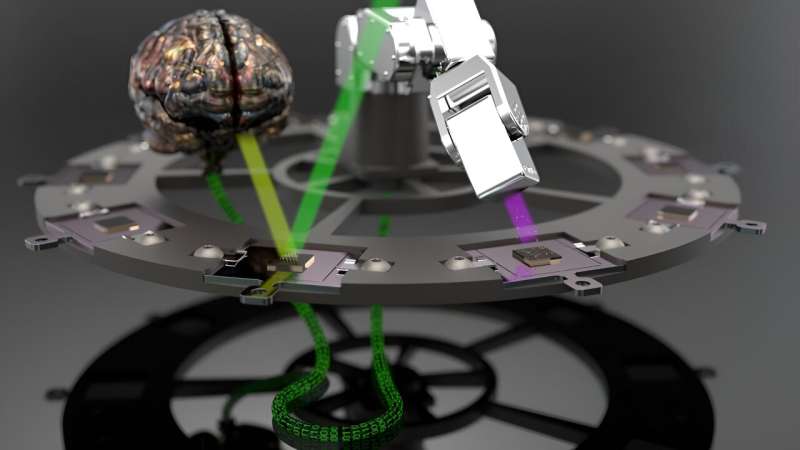This article has been reviewed according to Science X's editorial process and policies. Editors have highlighted the following attributes while ensuring the content's credibility:
fact-checked
peer-reviewed publication
trusted source
proofread
Researchers harness AI for autonomous discovery and optimization of materials

Today, researchers are developing ways to accelerate discovery by combining automated experiments, artificial intelligence and high-performance computing. A novel tool developed at Oak Ridge National Laboratory that leverages those technologies has demonstrated that AI can influence materials synthesis and conduct associated experiments without human supervision.
This autonomous materials synthesis tool uses pulsed laser deposition, or PLD, to deposit a thin layer of substance onto a base material. It then employs AI to analyze how the quality of the newly created material relates to the synthesis conditions, such as temperature, pressure and energy emitted during the PLD process. The AI suggests a revised set of conditions that may yield improved quality and then controls the PLD equipment to conduct the next experiment.
"We built computer control of all processes into the system and incorporated some hardware innovations to enable AI to drive experimentation," said the study's leader, Sumner Harris of the Center for Nanophase Materials Sciences at ORNL. "The automation allows us to perform our work 10 times faster, and the AI can understand huge parameter spaces with far fewer samples."
The work is published in the journal Small Methods.
More information: Sumner B. Harris et al, Autonomous Synthesis of Thin Film Materials with Pulsed Laser Deposition Enabled by In Situ Spectroscopy and Automation, Small Methods (2024). DOI: 10.1002/smtd.202301763
Journal information: Small Methods
Provided by Oak Ridge National Laboratory





















